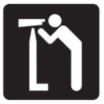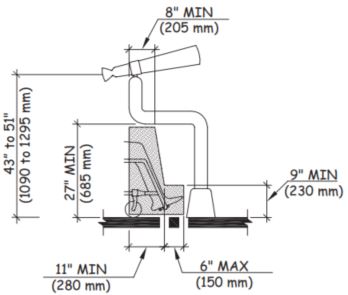Outdoor Developed Areas: A Summary of Accessibility Standards for Federal Outdoor Developed Areas
Viewing Scopes [1011.2, 1011.3, and 1011.8]

Viewing areas or overlooks are sometimes equipped with viewing scopes to provide visitors with a closer view of a point of interest. When viewing scopes are provided, separate viewing scopes must be provided for use from a standing position and from a seated position. This allows everybody the opportunity to experience similar views. Viewing scopes that can be used from a seated position provide viewing opportunities not only for seated individuals, but also for children and people of short stature. The viewing scopes can be mounted on separate pedestals or on the same pedestal.
At viewing scopes used from a seated position, a minimum of 36 by 48 inches of clear ground space positioned for a forward approach to the viewing scope must be provided. The clear ground space must be centered on the eyepiece of the viewing scope. Knee and toe clearance that complies with section 306 of the ABA Standards must be provided under the viewing scope (figure 25).
The eyepieces of viewing scopes used from a seated position must be between 43 and 51 inches above the ground surface. The other operable parts of viewing scopes, such as handles or levers, must be located between 15 and 48 inches above the ground and be operable using one hand without tightly grasping, pinching, or twisting the wrist, and with no more than 5 pounds of force.

Figure 25—Technical requirements for viewing scopes.

User Comments/Questions
Add Comment/Question